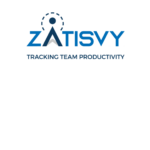Data extraction is a continuous process, the more you try to master it, more would be the chances of getting a clear picture of the ever-changing market and its constantly changing trends. Intensifying competition and escalating market volatility have been the factors that have actually led to the emergence of data mining and data extraction.
Companies, whether large or small, use data extraction services to collect data and information from a particular industry, or data linked to targeted customers, to devise and implement pertinent sales and marketing techniques, or develop and promote a certain product. It helps various industrial sectors to ascertain the current market trends and what customers want.
Sifting through vast streams of consumer statistics and customer data is a herculean task. Therefore, what could be the appropriate way to sieve and categorize those numbers, facts and figures, in a way that is correct and easily accessible to those who need it?
5 Tips to Master Data Extraction
Here are the tips to master the art of data extraction.
Tip 1: Mine More and More Data
With large volume of data, data miners would usually employ sampling as the only feasible way to extract data, as crawling the entire data was not so feasible. Now, with advanced computer software, data miners will be able to crawl and extract hordes of data from a website or any other source in a faster and accurate way.
Businesses and organizations should increase the overall scope of data extraction, crawl more data in order to reveal more accurate market and customer trends, obtain more insights, and make informed decisions based on those insights and trends.
Tip 2: Use Data Carefully
It is better to have an open mind with regard to suggested strategies and implications of data extraction. A company or an organization should always have a detailed plan for what they actually want to do and achieve in their business. Incorrectly analyzing the data or incorrect application of data results could result in negative impact.
Results of data should be analyzed and applied carefully according to your business objectives. A business owner should be able to make the right decision of adjusting to unexpected data results. Blindly incorporating these results in your business plan would in fact run contrary to your expectations, leading you nowhere closer to business goals.
Tip 3: Data Extraction Results Available
Reserving the data results and end reports of data extraction for business proprietors and shareholders would be of small use to employees, who would liaise or interact with customers, when employees would have benefited from knowing the entire data and information about those customers.
Ideal data extraction software would collect decipherable, accessible reports from large repositories of data for everyone, so even people who are not involved directly in the extraction process will understand the findings and conclusions of the reports. With the help of this detailed information, finding new customers or handling customers’ concerns in either known or unknown demographics, becomes easier and probably more successful.
Tip 4: Retain Old Data
Customers, their likes and dislikes, tend to change with the passage of time, so does the data. Do not discard the old data even if it seems obsolete or no longer valid. It is better to archive old data for future use so that you have some sort of historical reference source at hand. The old data might not be used daily but there would be times when this data may be used to examine past market and customer trends.
Tip 5: Pick the Right Data for Extraction
When engaging in a data extraction process, you may be tempted to extract everything available out there. This may run the risk of disoriented results and using information that will have no impact on your business. Before embarking on the data extraction process, it is better to decide which data should be included and which data should be excluded in order to obtain the right data.
Scraping data from the web may lead you to unfamiliar terms, maze of confusion and even data over abundance. Proper handling might sound easy but when executed with inappropriate processes, it may yield disastrous results.
Identify Business Goals
Identifying business goals and getting a clear perspective would go a long way in determining which data should be extracted. Data extraction process can be divided into several branches and one should choose it cleverly according to his or her business goals. For example, your primary prerequisite would be to obtain emails of potential customers for email campaign.
An email extractor tool will be needed to extract the emails from trustworthy sources. The tool will collect business contacts from web pages, HTML files or text files without duplicating email addresses. However, if you don’t have any idea about your business goal, then applying the best tool would be futile.
Set Realistic Goals
Once you have identified your business goals, try to make sure they are attainable and realistic. Unachievable and unrealistic targets would lead to obstacles in data extraction in the future. As there are various extraction tools that can be employed, vague goals actually make it hard to decide which tool to use.
Furthermore, you can decide which data extraction method to be used in order to obtain excellent results. Knowing your competitors, their past and present, would help you in determining targets based on the experiences of others. Setting expectations that have not been achieved before, would be a wise idea to move forward.
In Conclusion
Data extraction is a science in the real sense and it needs a skilled eye to locate where the treasure lies. The idea is to obtain data in the most effective and efficient way according to your requirements. Ability to find reliable and authenticated resources, along with well-researched information, would guide you to locate the exact data that you need.
If you try to open every website for data extraction without any direction or a proper plan, the results will be misleading and a waste of your resources, time and effort. Stay focused on the defined goals.



















































